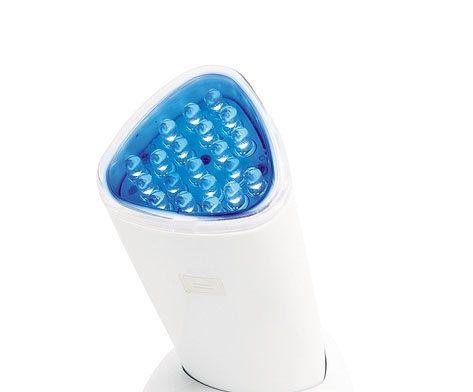Home beauty devices have become increasingly popular in recent years, offering a wide range of treatments from hair removal to skin rejuvenation. Among them, LED blue light machines claim to improve acne, but do they really work?
Consumer Council, in their September 2013 issue, analyzed the effectiveness of home-use LED blue light machines. To understand how it works, we must first understand the four main factors that contribute to acne: excessive sebum secretion, abnormal keratinization of hair follicles, proliferation of Propionibacterium acnes (P. acnes), and inflammation. Factors such as hormonal changes, weather, stress, lack of sleep, and dietary issues can exacerbate acne.
The blue light primarily targets P. acnes, as it produces photosensitizers called porphyrins. When stimulated by appropriate light waves, these porphyrins produce reactive oxygen radicals that can destroy P. acnes, reducing the number and severity of acne. This principle is used in medical treatments for acne, but its effectiveness is limited, and it is not suitable for everyone.
Acne is caused by various factors, and even if the proliferation of P. acnes is reduced, acne may not necessarily improve. The severity of acne also affects the effectiveness of blue light therapy. Deep-seated acne cannot be reached by blue light, and studies show that medical-grade blue light machines can only achieve 30-60% improvement.
Home-use blue light machines have shorter wavelengths, lower energy, and smaller coverage areas compared to medical-grade machines, so their effectiveness is uncertain. Users must also be careful, as prolonged use of blue light may darken skin pigmentation, and high-intensity blue light can cause irreversible damage to the retina, increasing the risk of age-related macular degeneration.
If you have acne problems, it is best to consult a doctor for treatment.

